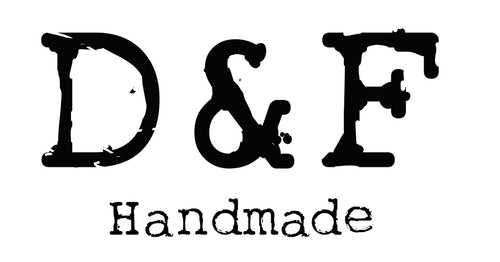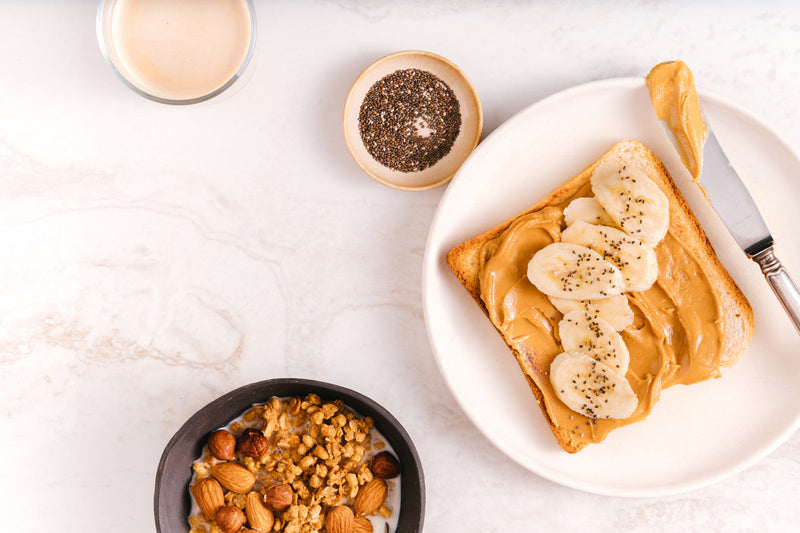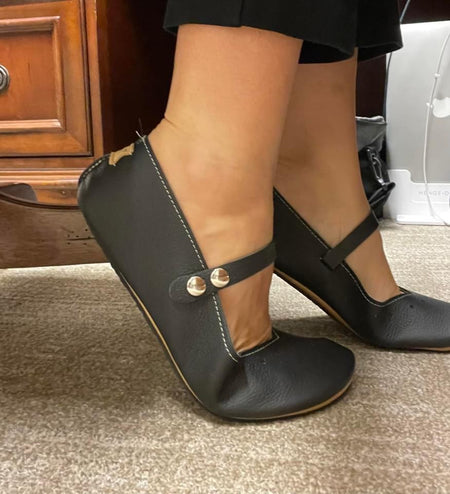First and foremost, why should you introduce peanut butter to your baby? The next question is how do you introduce peanut products to your baby?
It's simple, introducing products with peanuts (while your baby is young) can prevent them from developing a peanut allergy in later years.
And the American Academy of Pediatrics said so! When it comes to health and parenting advice, they're one of the top, most trusted resources.
Before introducing peanut products
Before introducing peanut products, talk with your baby's doctor or pediatrician.
If your little one has skin conditions such as mild or moderate eczema, severe eczema (dry, flaky skin), or any food allergy, your doctor may want to conduct an allergy test before allowing you to introduce peanuts.
If your baby has other food allergies, this may indicate an increased risk of other food allergens and allergic reactions.
While you don't want to risk your baby developing peanut allergy problems from not introducing peanuts, you also don't want your baby to have an allergic reaction!
Always play it safe and follow your doctor's guidelines when it comes to "how to introduce peanut butter to a baby."

At what age can I introduce peanut products?
The National Institute of Health has issued guidelines that instruct you on the best time to introduce peanut products.
The guidelines state that for babies with no food allergies or eczema, you can introduce peanut products along with other solid foods.
For babies with food allergies or eczema, please speak with your doctor first. They suggest that it is common to introduce peanuts for this group anywhere between 4 to 6 months to prevent peanut allergy as they grow up.
How to safely introduce peanut products to your baby
You will want to follow some basic safety tips and timing tips when introducing peanut products.

Safety tips
1. Only give your baby peanut products if they are healthy and ready for a new food introduction. Do not introduce peanut products if your baby is sick, has a fever, diarrhea, or other illnesses.
2. Introduce peanut products when you and your baby are at home! You want to be able to focus on the food introduction.
Timing tips
1. You need to set aside 2+ hours to watch your baby closely for any reactions. Make sure you can give your baby your complete and total attention during the peanut product introduction.
2. After giving the baby their first bite, wait TEN full minutes before giving them their next taste or bite. If they do not react -and you watched them vigilantly- you can give them their second bite. After the second bite, you can feed your baby at a regular feeding speed.
Common signs of food allergies
- Itching
- Rash or hives anywhere on the body (look like red bumps)
- Vomiting
- Coughing
- Trouble breathing
- A change in skin color (going pale or blue)
- Swollen lips, tongue, or face
- Wheezing (sounds like whistling in and out)
If your baby has an allergic reaction, you should call 911 or take your baby to the emergency room as quickly as possible! It is always better to be safe than sorry! We don't want you and your baby coming to any risk.
Do's and Don'ts with peanut products
Do's
Only use creamy peanut butter or peanut butter powder.
Mix your peanut product with a liquid (breast milk, puree, water) to thin it out.
Remain vigilant and hyper-aware during your peanut introduction.
Don'ts
Do not give baby "crunchy" peanut butter or ground peanuts.
Never give your baby whole peanuts.
Do not give your baby plain peanut butter straight from the jar.
Don't introduce more than one food at a time! So if you're introducing peanuts, stick to just your peanut product.

Recipes for introducing peanut products
Prep time will differ for each easy peanut product. Listed below are the most simple -and safe- options to introduce peanut.
Peanut butter puree/cream
Puree recipe ingredients
- 2 to 3 tablespoons of water
- 1 to 2 teaspoons of all-natural peanut butter
OR you can mix a puree with liquid food
- 2 to 3 tablespoons of yogurt or a pureed fruit or vegetable or breast milk
- 1 to 2 teaspoons of all-natural peanut butter
1. Mix the liquid and peanut butter until it reaches a smooth, creamy consistency. You want it to match a smooth peanut butter look. If you want a thinned peanut butter puree, simply add more water to the mixture.
Peanut butter sauce
- 2 tablespoons of peanut flour or powdered peanut butter
- 2 to 3 tablespoons of warm water, applesauce, yogurt, or smashed/pureed banana.
1. Mix the flour or power with your chosen liquid (warm water, applesauce, yogurt, or pureed banana).
2. Allow your mixture time to cool.
3. If you want a thinned peanut butter sauce, simply add more water/liquid to the mixture.
Peanut butter puffs
You can find peanut butter puffs at local grocery stores or drug stores. They are yummy little dissolvable "puffs" that are an easy and fun way to introduce peanuts.
Bamba Peanut Puffs and Earth's Best Organic Peanut Butter Puffs are a few popular names.
- 20 or more peanut butter puffs
1. If your baby is younger than 7 months, soak and soften puffs in 4 to 6 tablespoons of water. Once they are soft, you can feed your baby one puff at a time.
2. If your baby is older than 7 months and can eat dissolvable foods safely, you can simply feed them one puff at a time.
Peanut butter toast
Even our little ones love a bit of toast in the morning.
So if your baby is already eating toast in the morning, they might enjoy a spot of peanut butter toast.
For this one, you can ditch the recipe. We all know how to slather peanut butter onto bread! But don't go crazy; a light spreading is all you need.
- Lightly toast a piece of bread. Then you can spread your peanut butter puree or cream (that you've watered down) lightly on the bread.
Et voila! Your baby loves you even more.

Introduce peanut butter to your baby with Duchess and Fox
We know you love your little one and want only the best for them. So do we!
So we are here to help, and we have a peanut butter introduction product we think you'll love.
Our Silicone Food and Fruit Feeder Teether may work perfectly for you and your baby. You'll have to wait until after introducing peanuts to your baby before you can use our feeder product, though! Do not introduce peanut products to your baby with our teether for the first time. Use it for the second, third, or fourth time even! When you introduce peanut products for the first time, you will want complete control over how much the baby is eating.
Our teether is the answer for babies who want to use their mouth and have painful, erupting teeth. You can put any food that you know your baby can safely eat (this may be different depending on your food introduction plan) and that you have already introduced into their diet. We know you and your baby will love it.
Extra resources
National Institute of Health - Early introduction of foods to prevent food allergy
Peanut Allergies: What You Should Know About the Latest Research and Guidelines



0 comments